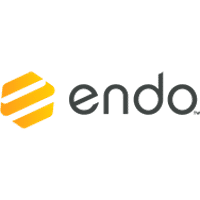译者按:
南方医科大学珠江医院麻醉科《珠江视界》翻译小组每月通过主题词检索,从PubMed与Web of Science等检索引擎,筛选出近期国内麻醉学科所发表的高质量SCI文献与研究成果,进行摘要导读的同时通过《新青年麻醉论坛》珠江视界专栏以每月好文的方式向全国同道推介。
本期《珠江视界-每月好文》节选2025年9-2025年10月发表的部分文章,研究来自同济大学医学院上海市第四人民医院、南京鼓楼医院、南方医科大学南方医院等,内容涵盖三阶段序贯靶向滴鼻剂校正小胶质细胞线粒体异常分裂、通过靶向延髓头端腹内侧区的组胺H4受体来缓解高血压、强化与常规术中血压管理对大型腹部手术后心血管事件的影响:BP-CARES随机对照试验等方面(#为第一作者,*为通讯作者)。
每月好文(2025.09.02-2025.10.01)之上
1
1. Ye Wang#, Lei Liu#, Jinghao Wang#, Jiannan Li, Huiming Li, Rui Wang, Hui Wang,Min Wang,Quanying Liu, Zhongmin Fan, Yunyun Zhang, Xinxin Zhang, Dan Wang, Sa Wang, Rou Xue, Jindong Mao, Min Cai, Pengfei Wei, Hailong Dong, Yumei Wu,*and Guangchao Zhao*. Time-Dependent Therapeutic Effect of S-Ketamine on PTSD Mediated by VTA-OFC Dopaminergic Neurocircuit. Adv Sci, 2025 Sep 25: e00805. PMID: 40995691
【题目】
VTA-OFC多巴胺神经环路介导S-氯胺酮治疗PTSD的时效性作用
【通讯作者】
吴玉梅 第四军医大学药学院药理学教研室;
赵广超 第四军医大学西京医院麻醉与围术期医学科;
【第一作者】
Ye Wang, Lei Liu, Jinghao Wang 第四军医大学西京医院麻醉与围术期医学科;
【摘要】
目前创伤后应激障碍(PTSD)的药物治疗存在起效延迟和副作用的限制。尽管氯胺酮能够快速缓解PTSD的核心症状,但其临床疗效因给药时机的不同存在显著差异。然而其潜在机制尚不清楚。本研究比较了早期(第1天)和晚期(第7天)使用S-氯胺酮对啮齿动物PTSD模型中行为表型的治疗效果。研究发现,早期而非晚期给予S-氯胺酮能显著改善PTSD症状,尤其是受损的恐惧消退行为。在PTSD模型建立后,腹侧被盖区多巴胺能神经元(VTADA)的放电频率和簇状放电率活动持续下降,而早期S-氯胺酮干预能够使其恢复。特别值得注意的是,VTADA神经元对条件刺激作出反应,在恐惧消退期间介导厌恶性记忆编码的替换。腹侧被盖区-眶额皮质(VTADA-OF)神经环路的抑制会阻断S-氯胺酮对PTSD的治疗作用。本研究进一步开发了针对OFC的非侵入性时间干涉脑刺激技术,该技术能够敏化皮层多巴胺能传递,并延长S-氯胺酮抗PTSD的有效时间窗口。总而言之,本研究阐明了一种异质性VTA-OFC神经环路介导S-氯胺酮时间依赖性治疗效应的神经机制,并开发了一种优化氯胺酮辅助心理治疗PTSD策略的新技术。
2
2. Miao-Miao Fei#, Qi-Dong Liu#, Hui Zhang#, Yawei Du, Liang Chen, Juan Wang*, Weng-Guo Cui*, Cheng Li*. Three-stage sequential targeted nasal drops for correcting abnormal mitochondrial division in microglia. Bioact Mater, 2025, Jul 1, 52: 810-828. PMID: 40677759
【题目】
三阶段序贯靶向滴鼻剂校正小胶质细胞线粒体异常分裂
【通讯作者】
李成 同济大学医学院上海市第四人民医院麻醉与围术期医学科,上海市麻醉与脑功能调控重点实验室,麻醉与围术期医学临床研究中心,脑功能与人工智能转化研究所;王娟,Wenguo Cui 上海交通大学医学院附属瑞金医院骨科,上海市防治骨关节病损重点实验室,上海市伤骨科研究所;
【第一作者】
费苗苗 张辉 刘起东 同济大学医学院上海市第四人民医院麻醉与围术期医学科,上海市麻醉与脑功能调控重点实验室,麻醉与围术期医学临床研究中心,脑功能与人工智能转化研究所;
【摘要】
小胶质细胞线粒体分裂异常对中枢神经系统(CNS)疾病有显著影响。然而,通过小胶质细胞线粒体治疗中枢神经系统疾病面临多重挑战:包括药物的脑内递送、小胶质细胞靶向和线粒体调控。为此,本研究开发了一种新型三阶段序贯靶向滴鼻递药系统,通过无创鼻腔给药、靶向小胶质细胞和调控线粒体,实现药物精确递送至脑病灶核心区域。首先,基于临床数据和转录组分析,选定脱氢表雄酮(DHEA)作为调控线粒体分裂的关键神经类固醇。其次,制备表面带正电荷的水凝胶微球以粘附在鼻黏膜,避免快速清除,实现鼻黏膜靶向的第一阶段。随后,用靶向脂质体构建携带细胞毒性T淋巴细胞相关蛋白-4,并将其修饰到微球中,它可以释放脂质体通过鼻腔进入大脑并与活化的小胶质细胞表面受体CD80/86结合,完成细胞靶向的第二阶段。第三阶段,系统响应微环境释放DHEA,精准调控动力相关蛋白质-1参与线粒体膜重塑,抑制线粒体异常分裂,稳定线粒体形态和功能,抑制小胶质细胞活化。这项研究表明,在小鼠(n=200)和猪(n=16)的模型中,三阶段序贯滴鼻剂通过鼻粘膜能有效通过鼻-脑通路,同时显著改善麻醉或手术引起的小鼠认知功能障碍。因此,三阶段序贯滴鼻是一种很有前途的治疗中枢神经系统疾病的方法。
3
3. Wei Yue#*, Bo Li#, Yandong Tian, Linzhong Zhang. The 95% effective dose of ciprofol-assisted sedation for knee arthroplasty in elderly patients: A prospective cohort study. Int J Surg, 2025 Sep 24, PMID: 40990638
【题目】
环丙酚辅助镇静用于老年患者膝关节置换术的95%有效剂量:一项前瞻性队列研究
【通讯作者】
岳维 山西医科大学麻醉学院,山西医科大学第二医院麻醉科;
【第一作者】
岳维 山西医科大学麻醉学院,山西医科大学第二医院麻醉科; 李博 山西医科大学麻醉学院;
【摘要】
背景:镇静是区域麻醉的重要组成部分。老年患者的药代动力学和药效学随着年龄的增长而发生变化,导致对多种药物的敏感性增加。关于环丙酚用于老年患者椎管内麻醉下膝关节置换术辅助镇静的95%有效剂量的数据很少。
材料和方法:一项前瞻性队列研究纳入了65岁及以上接受膝关节置换术的老年患者。环丙酚镇静的初始维持剂量为0.2 mg·kg−1·h−1。使用改良警觉/镇静评估(MOAA/S)量表评估镇静程度,同时监测脑电双频指数(BIS)值。采用偏倚硬币设计上下序贯法调整后续每位患者环丙酚维持剂量。环丙酚辅助镇静的ED95采用等渗回归法计算,并基于2000次重复抽样的自举方法获得95%置信区间。同时记录术中、术后生命体征变化及不良事件发生情况。
结果:共有66名患者参与研究。1例患者因观察时间不足被排除;4例低血压患者给予麻黄碱缓解后被排除;2例患者因心动过缓给予阿托品缓解后被排除,3例患者因肢体运动异常被排除。在完成实验的56例患者中,未发生与镇静相关的不良事件。计算得出环丙酚辅助镇静的ED95为0.363mg·kg−1·h−1[95%CI,0.352~ 0.375mg·kg−1·h−1]。
结论:在椎管内麻醉阻滞平面达T10至T11时,环丙酚用于老年膝关节置换术辅助镇静的ED95为0.363mg·kg−1·h−1 [95%CI, 0.352~ 0.375 mg·kg−1·h−1]。
4
4.Shi Y#, Zhang YX#, Chen JY#, Ma S#, Xue WX, Li W, Li QX, Song B, Li YT, Ma HY, Xie ST, Li HZ, Chen DJ, Zhang QP, Ma HJ, Wang JJ, Yu L*, Zhang XY*, Zhu JN*. Targeting Histamine H4 Receptor in the Rostral Ventromedial Medulla to Relieve Hypertension. Adv Sci (Weinh). 2025 Sep 29:e08176. doi: 10.1002/advs.202508176. Epub ahead of print. PMID: 41017599.
【题目】
通过靶向延髓头端腹内侧区的组胺H4受体来缓解高血压
【通讯作者】
朱景宁 国家药物生物技术重点实验室,国家遗传工程小鼠资源库,南京鼓楼医院麻醉科,脑科学研究所,南京大学生命科学学院生理学系,南京大学化学生物医药创新中心(ChemBIC),化学生物医药交叉研究中心;
张潇洋 国家药物生物技术重点实验室,国家遗传工程小鼠资源库,南京鼓楼医院麻醉科,脑科学研究所,南京大学生命科学学院生理学系;
于雷 国家药物生物技术重点实验室,国家遗传工程小鼠资源库,南京鼓楼医院麻醉科,脑科学研究所,南京大学生命科学学院生理学系,江苏第二师范大学;
【第一作者】
石莹,张洋浔,陈俊毅,马赛 国家药物生物技术重点实验室,国家遗传工程小鼠资源库,南京鼓楼医院麻醉科,脑科学研究所,南京大学生命科学学院生理学系;
【摘要】
难治性高血压通常涉及中枢驱动的交感神经增强。然而,用于治疗高血压的有效中枢靶点仍然稀缺。本研究探讨了组胺H4受体(H4R)在中枢心血管调节中的作用,H4R是组胺受体家族的最新成员。对人类大脑的单核RNA测序数据集分析以及大鼠大脑的RNAscope检测显示,H4R在延髓头端腹内侧区(RVMM)有保守性表达,RVMM是关键的交感心血管中枢。通过光遗传学激活RVMM的组胺能传入纤维,会通过H4R引发血压下降和心动过缓反应,其通过瞬时受体电位香草素1(TRPV1)激发GABA能前交感神经元。通过鼻腔给予H4R激动剂,在自由活动的自发性高血压大鼠和应激诱导的高血压大鼠中产生持续的降压效果。这些发现揭示了RVMM组胺H4受体的降压作用以及其作为高血压潜在中枢治疗靶点的可能性。
5
5.Yang W#, Tang R, Zhou Y, Zhang J, Mei S, Peng Y, Huang X, Xing S, Gao Y, Xu Q*, He Z*. Succinic Acid-Induced Macrophage Endocytosis Promotes Extracellular Vesicle-Based Integrin Beta1 Transfer Accelerating Fibroblast Activation and Sepsis-Associated Pulmonary Fibrosis. Adv Sci (Weinh). 2025 Sep 2:e07411. doi: 10.1002/advs.202507411. Epub ahead of print. PMID: 40898357
【题目】
琥珀酸诱导的巨噬细胞内吞作用促进细胞外囊泡介导的整合素β1转移,加速成纤维细胞激活及脓毒症相关肺纤维化的发展
【通讯作者】
何征宇,徐侨翌 上海交通大学医学院附属仁济医院重症医学科,教育部麻醉学重点实验室(上海交通大学);
【第一作者】
Wenyu Yang 上海交通大学医学院附属仁济医院重症医学科,教育部麻醉学重点实验室(上海交通大学);
【摘要】
脓毒症相关肺纤维化(SAPF)是一种由持续的成纤维细胞激活和过多的细胞外基质(ECM)沉积驱动的危及生命的疾病。尽管代谢重编程、促纤维化的细胞外囊泡(EVs)和整合素激活与肺纤维化有关,但它们之间的相互作用尚不清楚。本研究揭示了琥珀酸(糖代谢重编程的产物)促进巨噬细胞介导的内吞作用,推动促纤维化EVs的释放。这些EVs将整合素β1(ITGβ1)从巨噬细胞转移到成纤维细胞,激活成纤维细胞并推动SAPF的进展。通过单细胞RNA测序(scRNA-seq)、蛋白质组学、免疫荧光和电子显微镜,研究确定了EV介导的ITGβ1转移在巨噬细胞与成纤维细胞通信中的关键作用。敲除ITGβ1或Alix(多泡体(MVBs)生物合成的介质)抑制了促纤维化EVs的形成,并缓解了SAPF。这些发现强调了一个新机制,即通过EVs转移ITGβ1在巨噬细胞与成纤维细胞通信中起关键作用,这是SAPF发病机制的一个新机制。靶向EV介导的ITGβ1转移可以为缓解SAPF的进展提供一种有前景的治疗策略。
6
6. Ji MJ#, Li Y#, Yang J#, Wang K, Sang S, Yang H, Tian C, Tang X, Cai JH, He T, Zhang C, Tang H, Cui T, Meng X, Cao X, Zhu J, Wang J, Cao JL*, Gao D*, Liu C*. RNF168 dephosphorylation ameliorates cognitive decline in Aβ-based mouse models of Alzheimer's disease. Acta Neuropathol Commun. 2025 Sep 24; 13(1): 198. doi: 10.1186/s40478-025-02115-8. PMID: 40993809
【题目】
RNF168去磷酸化改善了基于Aβ的阿尔茨海默病小鼠模型中的认知衰退
【通讯作者】
曹君利 江苏省麻醉学重点实验室,江苏省麻醉学与脑科学重点实验室,徐州医科大学麻醉学院;
高大明 多细胞系统重点实验室,上海生物化学与细胞生物学研究所,分子细胞科学卓越创新中心,中国科学院;
刘超 江苏省麻醉学重点实验室,江苏省麻醉与镇痛应用技术重点实验室,徐州医科大学麻醉学院;
【第一作者】
Miao-Jin Ji 江苏省麻醉学重点实验室,江苏省麻醉学与脑科学重点实验室,徐州医科大学麻醉学院;
Yun Li 江苏省麻醉学重点实验室,江苏省麻醉学与脑科学重点实验室,徐州医科大学麻醉学院,同济大学医学院附属上海东方医院麻醉科;Jiao Yang 江苏省麻醉学重点实验室,江苏省麻醉学与脑科学重点实验室,徐州医科大学麻醉学院,复旦大学附属中山医院麻醉科;
【摘要】
阿尔茨海默病(AD)是老年人中最常见的神经退行性疾病,临床上有效的治疗方法有限。在AD患者的脑中,葡萄糖代谢受损已被观察到,然而将代谢信号与AD发病机制联系起来的机制仍然不清楚。我们之前的研究表明,生长信号通过RNF168的磷酸化调节基因组稳定性。本次研究中,在基于Aβ的AD小鼠模型的海马体中,RNF168在Ser60位点的磷酸化显著增加。在基于Aβ的AD小鼠模型中,RNF168 S60的遗传性去磷酸化增强了DNA损伤反应,减少了双链断裂(DSBs),并改善了学习和记忆障碍。从机制上讲,RNF168 S60的磷酸化损害了海马体中苔藓纤维-CA3突触的长时程增强(LTP)。重要的是,RNF168 S60的遗传性去磷酸化挽救了苔藓纤维-CA3突触LTP的缺陷、AD相关的棘突丢失和Aβ病理。通过S6K1抑制剂PF-4708671抑制RNF168磷酸化的药物治疗缓解了学习和记忆障碍。此外,我们证明了抗高血糖药物二甲双胍通过抑制RNF168磷酸化改善了学习和记忆。我们的发现为解决阿尔茨海默病中的突触功能障碍提供了新的治疗靶点。
7
7. Hao Su#, Xiya Li, Shenjia Gao, Yi Jiang, Xinyi Wu, Zhaoyuan Chen, Han Wu, Qing Hua, Rui Zu, Huaijiang Xiang, Ronen Ben-Ami, Changhong Miao, Li Tan, Ying Li*, Jun Wang*, Wankun Chen*. RIPK1 Drives JAK1-STAT3 Signaling to Promote CXCL1-Mediated Neutrophil Recruitment in Sepsis-Induced Lung Injury.Adv Sci (Weinh), 2025 Sep 15: e07123. PMID: 40953301
【题目】
RIPK1驱动JAK1-STAT3信号通路促进CXCL1介导的中性粒细胞募集加重脓毒症性肺损伤
【通讯作者】
陈万坤 复旦大学附属中山医院麻醉科,上海市围手术期应力与保护重点实验室,上海老年医学中心麻醉科,复旦大学附属中山医院青浦分院麻醉科;
Jun Wang 复旦大学基础医学院中西医结合与神经生物学系,医学神经生物学国家重点实验室;
Ying Li 中国科学院上海有机化学研究所,生物与化学交叉学科研究中心;
【第一作者】
Hao Su 复旦大学附属中山医院麻醉科,上海市围手术期应力与保护重点实验室;
【摘要】
脓毒症诱发的肺损伤以失控性炎症反应和肺泡上皮完整性破坏为特征,是导致脓毒症相关死亡的关键因素。尽管受体相互作用丝氨酸/苏氨酸蛋白激酶1(RIPK1)在调节坏死性凋亡和炎症中至关重要,但其在脓毒症诱发的肺损伤中的具体作用机制尚不明确。本研究发现,在脓毒症过程中,在Ⅱ型肺泡上皮细胞(AECs)中RIPK1被选择性激活。通过整合转录组学与蛋白质组学分析,确定CXCL1是RIPK1的关键下游靶基因。在机制上,RIPK1与JAK1相互作用,诱导STAT3磷酸化与核转位,促进其结合至Cxcl1启动子区域,从而上调CXCL1表达并驱动中性粒细胞过度募集。遗传学或药理学抑制RIPK1可有效减少CXCL1产生、减轻中性粒细胞浸润及肺泡损伤,提高了脓毒症小鼠存活率。选择性RIPK1抑制剂Compound 62在实验中表现出多重疗效:能抑制系统性炎症级联反应、维护上皮屏障完整性,并提高小鼠生存率。这些发现确立了RIPK1作为脓毒症诱导的肺损伤治疗靶点的重要性,并将肺泡上皮细胞重新定义为炎症放大效应的积极作用。本研究为制定精准干预策略、解决危重症医学领域这一迫切临床需求提供了重要理论依据。
8
8. Chang Liu#, Qi Wang, Enran Liu, Zhixi Li, Haijing Sui, Jiaqi Jin, Guangmin Chen, Chenglong Li, Hongyu Wang, Zhenyu Sun, Hongjie Xi*. Quercetagetin alleviates ischemic stroke injury by preserving macrophage/microglia homeostasis via inhibiting ACP5. Phytomedicine, 2025 Sep 11:148:157256. PMID: 40972264
【题目】
槲皮黄素通过抑制ACP5保持巨噬细胞/小胶质细胞稳态来减轻缺血性中风损伤
【通讯作者】
席宏杰 哈尔滨医科大学附属第二医院麻醉科,黑龙江省麻醉学与重症医学研究重点实验室;
【第一作者】
Chang Liu 哈尔滨医科大学附属肿瘤医院麻醉科,哈尔滨医科大学附属第二医院麻醉科,黑龙江省麻醉学与重症医学研究重点实验室,心肌缺血重点实验室;
【摘要】
背景:巨噬细胞/小胶质细胞引发的促炎反应在急性缺血性中风(AIS)的预后中起着至关重要的作用。确定调节这些细胞稳态的新靶点至关重要。基于这些靶点制定治疗策略可以显着改善AIS治疗效果。
目的:本研究旨在确定巨噬细胞/小胶质细胞稳态的新调控靶点,并制定有效的AIS治疗策略。
研究设计和方法:使用ssGSEA和免疫荧光(IF)观察AIS患者GSE58294和短暂性大脑中动脉闭塞(tMCAO)小鼠脑的巨噬细胞浸润情况。整合MSigDB数据库,鉴定差异表达的巨噬细胞/小胶质细胞相关基因(DEMAGs),并利用机器学习方法进一步筛选。采用ELISA、蛋白质印迹、IHC和IF检测PBMC、BV2细胞和小鼠脑组织中临界DEMAG蛋白水平。通过siRNA干扰研究关键基因的功能。利用天然产物库筛选能够结合该蛋白的化合物,通过分子对接、分子动力学模拟、CETSA和MST分析分析化合物和蛋白质的结合。
结果:本实验观察到AIS患者显示显著的巨噬细胞浸润。上调的关键DEMAG,ACP5,在AIS患者的PBMCs、氧-葡萄糖剥夺和再氧合(OGD/R)处理的BV2细胞和tMCAO小鼠脑中均明显升高。靶向ACP5蛋白的槲皮激素(QG)被鉴定为抑制剂。QG能够部分通过维持巨噬细胞/小胶质细胞稳态和抑制ACP5,改善tMCAO小鼠的全身性失衡、脑损伤和认知障碍。
结论:本研究表明,ACP5是巨噬细胞/小胶质细胞促炎反应的新型调控因子,在调节AIS相关的过度炎症和氧化应激方面发挥着关键作用。此外,QG通过抑制ACP5来减轻AIS诱导的脑损伤,为AIS提供了新的治疗靶点与药物候选方向。
9
9. Jishi Ye#*, Yu Ding#, Ruolan Wu#, Huang Ding, Juan Ren, Zhongyuan Xia, Jingli Chen*, Shuang Xie*, Yifan Jia* Neuron-specific transcriptomic dysregulation in methotrexate-induced cognitive impairment revealed by SnRNA-seq. Int J Surg, 2025 Sep 24. PMID: 40990613
【题目】
单核RNA测序揭示甲氨蝶呤诱导的认知障碍中的神经元特异性转录组学失调
【通讯作者】
贾一帆 武汉大学人民医院疼痛科;叶济世 武汉大学人民医院疼痛科,武汉大学人民医院麻醉科;陈静莉 武汉大学人民医院疼痛科,华中科技大学同济医学院附属武汉市中心医院麻醉科;谢爽 武汉大学人民医院麻醉科;
【第一作者】
叶济世 武汉大学人民医院疼痛科,武汉大学人民医院疼痛科;
Yu Ding 武汉大学人民医院疼痛科;Ruolan Wu 华中科技大学同济医学院附属武汉市中心医院麻醉科;
【摘要】
背景:甲氨蝶呤(MTX)是一种广泛使用的化疗药物,但其神经毒性可导致认知障碍,尤其是通过影响海马体功能。然而,其潜在的分子机制尚未完全清楚。破译MTX诱导的海马体细胞认知障碍相关分子机制,有望揭示新的治疗靶点。
方法:本研究通过化疗药物MTX建立了诱导的认知障碍小鼠模型。随后,我们应用单核RNA测序(snRNA-seq)来分析MTX处理后小鼠海马细胞的转录组改变,重点关注神经元特异性的基因表达改变。
结果:结果显示,MTX化疗导致兴奋性神经元减少而抑制性神经元增加,从而影响神经网络的兴奋-抑制平衡,并介导认知功能障碍。此外,MTX显着扰乱了GABA能神经元的转录调控网络及其潜在发育轨迹。它增强了Nrg1-Erbb4通路,同时减弱了Nrxn3-Lrrtm4通路,破坏了跨突触信号传导,并导致兴奋性和抑制性突触功能异常。这些破坏最终可能导致神经网络失衡和认知功能障碍。
结论:本研究强调了MTX化疗对海马体细胞功能的具体影响,深化了对MTX诱导认知障碍的分子机制的理解,并为开发潜在的神经保护与认知功能恢复策略提供了新的理论依据与治疗靶点。
10
10. Yi Jiang#, Shenjia Gao#, Xiya Li#, Hao Sun, Xinyi Wu, Jiahui Gu, Zhaoyuan Chen, Han Wu, Xiaoqiang Zhao, Tongtong Zhang, Ronen Ben-Ami, Yuan Le, Timothy R Billiar, Changhong Miao, Jie Zhang*, Jun Wang*, Wankun Chen*. MPO-anchored ENO1 mediates neutrophil extracellular trap DNA for enhancing Treg differentiation via IFITM2 during sepsis. J Clin Invest. 2025 Sep 2:e183541. PMID: 40892462
【题目】
MPO锚定的ENO1通过IFITM2调控脓毒症期间中性粒细胞胞外陷阱DNA以促进Treg分化
【通讯作者】张洁 复旦大学附属中山医院麻醉科;
汪军 复旦大学上海医学院脑科学研究所;陈万坤 复旦大学附属中山医院麻醉科,上海老年医学中心麻醉科,复旦附属中山医院青浦分院麻醉科;
【第一作者】
Yi Jiang, Shenjia Gao, Xiya Li 复旦大学附属中山医院麻醉科;
【摘要】
脓毒症是由宿主对感染异常反应所引发的危及生命的疾病。脓毒症期间与炎症相关的免疫抑制是导致继发性感染和多器官功能障碍的关键因素。调节性T细胞(Treg)在脓毒症免疫抑制中发挥重要作用,其分化和功能的调控机制仍需进一步阐明。本研究中,我们发现中性粒细胞胞外诱捕网(NETs)通过与CD4+ T细胞的直接相互作用,增强Treg的分化和功能,从而参与脓毒症免疫抑制的发展。简而言之,NETs通过其关键蛋白髓过氧化物酶(MPO)将烯醇化酶1(ENO1)锚定在CD4+ T细胞膜上,随后招募干扰素诱导跨膜蛋白2(IFITM2)。IFITM2作为DNA受体识别NETs-DNA,并激活细胞内的RAS相关蛋白1B(RAP1B)及其下游的细胞外信号调节激酶(ERK)信号通路,从而促进Treg的分化与功能。抑制ENO1可显著减弱NETs诱导的Treg分化,并缓解小鼠脓毒症症状。综上所述,我们发现NETs通过增强Treg分化在脓毒症免疫抑制中的作用,识别出ENO1作为NETs-MPO的锚定分子,并揭示IFITM2-RAP1B-ERK信号通路调控Treg分化的分子机制。这些发现加深了我们对脓毒症免疫发病机制的理解,并为治疗脓毒症相关免疫抑制提供了潜在的靶点。
11
11. Bingcheng Zhao#, Jiaqiang Zhang#, Yishan Xie, Zhuoxi Wu, Gaofeng Guo, Shaohui Lei, Jiaming Liu, Huamin Liu, Jian Liu, Weifeng Liu, Cai Li, Yangyang Lian, Yuting Tan, Dongxin Wang, Hong Li*, Daniel I Sessler, Kexuan Liu*. Intensive vs Conventional Intraoperative Blood Pressure Management on Cardiovascular Events After Major Abdominal Surgery: The BP-CARES Randomized Trial. J Am Coll Cardiol. 2025 Sep 23; 86(12): 892-906. PMID: 40962376.
【题目】
强化与常规术中血压管理对大型腹部手术后心血管事件的影响:BP-CARES随机对照试验
【通讯作者】李洪 陆军军医大学附属第二医院麻醉科;
刘克玄 南方医科大学南方医院麻醉科;美国结果研究联盟;
【第一作者】
赵秉诚 南方医科大学南方医院麻醉科;美国结果研究联盟;张加强 河南省人民医院麻醉科;
【摘要】
背景:术中低血压与大型非心脏手术后心血管并发症的发生密切相关。然而,目前关于强化术中血压管理能否降低并发症发生率的随机对照研究结果并不一致。
研究目的:本研究旨在探讨强化术中血压管理能否降低大型腹部手术后30天内复合心血管并发症的发生率。
研究方法:本研究是一项研究者发起的、平行分组、随机对照试验。在中国的3家研究中心中,受试者被按1:1比例随机分配至强化血压管理组或常规血压管理组。强化策略组的目标为术中平均动脉压(MAP)≥80 mm Hg;常规策略组的目标为术中MAP≥65mmHg或术前基础血压的60%。我们研究纳入年龄≥45岁、已确诊心血管疾病或具有心血管危险因素、且计划进行预计持续时间≥2小时的腹部住院手术患者。主要研究终点为术后30天内复合心血管事件的发生,包括心肌损伤或梗死、新发临床显著心律失常、急性心力衰竭、脑卒中、心脏骤停及全因死亡。
研究结果:自2020年6月30日至2022年9月23日,共有1500例患者入组,其中1477例纳入修正意向治疗分析人群(强化组739例,常规组738例)。强化术中血压管理组的低血压暴露负担明显较低,如以MAP <65mmHg的累计持续时间为例,中位数为1分钟(四分位距:0-7分钟),而常规组为8分钟(四分位距:0-20分钟)。主要复合终点事件在强化组的739例患者中发生107例(14.5%),在常规组的738例患者中发生100例(13.6%),相对风险为1.07(95%置信区间:0.83-1.38;P=0.61)。
结论:在接受大型腹部手术的高危患者中,将术中平均动脉压维持在≥80mmHg的强化血压管理策略,与以≥65mmHg或术前基础值60%为目标的常规管理相比,并未显著降低术后心血管事件的发生率。
12
12. Hao Tian#, Yonghong Xiong#, Junbiao Zhan, Zhikun Lu, Yuxi Zhang, Yan Leng, Qin Huang, Zhongyuan Xia*. Inhibition of Macrophage ARID3A Alleviates Myocardial Ischemia-Reperfusion Injury After Heart Transplantation by Reducing THBS1/CD47 Signaling-Mediated Neutrophil Extracellular Traps Formation. Adv Sci (Weinh). 2025 Sep 6: e09952. PMID: 40913516.
【题目】
抑制巨噬细胞ARID3A通过减少THBS1/CD47信号介导的中性粒细胞胞外诱捕网形成,减轻心脏移植后心肌缺血再灌注损伤
【通讯作者】
夏中元 武汉大学人民医院麻醉科;
【第一作者】
Hao Tian, Yonghong Xiong 武汉大学人民医院麻醉科;
【摘要】
减轻心肌缺血再灌注(IR)损伤对于提高心脏移植(HT)的成功率和改善患者预后至关重要。在心脏移植过程中,浸润的中性粒细胞受到多种其他细胞类型的影响与调控,并通过过度释放中性粒细胞胞外诱捕网(neutrophil extracellular traps, NETs)促进心肌IR损伤。然而,中性粒细胞与非心肌细胞之间相互作用的具体机制尚未被充分阐明。本研究利用单细胞RNA测序技术对心脏移植后心脏组织的细胞组成进行刻画,并探索中性粒细胞与其他非心肌细胞之间的相互作用。进一步地,通过构建髓系细胞特异性ARID3A敲除小鼠,研究富含AT区相互作用结构域蛋白3A(ARID3A)在心脏移植过程中的作用。同时,运用分子对接分析鉴定4-辛酰伊康酸(4-octyl itaconate, 4-OI)的作用靶点。研究结果显示,在心脏移植再灌注阶段募集的M1型巨噬细胞可通过THBS1/CD47轴促进NETs形成并加重心肌IR损伤,而CD47通过激活p38 MAPK信号通路诱导NETs形成。外源性给予4-OI可特异性抑制巨噬细胞中的ARID3A表达,从而抑制NETs形成并减轻心肌IR损伤。综上所述,THBS1/CD47信号通路在M1型巨噬细胞与NETs相关中性粒细胞之间发挥关键桥梁作用,而4-OI被鉴定为一种潜在的治疗心脏移植后心肌缺血再灌注损伤的候选药物。
13
13. Qing-Jin Pan#, Hou-Hua Yin, Ya-Nan Liu, Ping Dai, Ying Bai, Xian Fu, Qing Jiang, Yi-Wen Meng, Ai-Zhi Lin, Xue Zhou, Ling Huang, Si-Yi Yin, and Jun-Yan Liu*. High-Sucrose Diet-Induced Reprogramming of Plasma Oxylipin Profiles Reflects Dietary Risk for Gut Barrier Dysfunction. J Agric Food Chem, 2025 Sep 10. PMID: 40873349
【题目】
高糖饮食诱导的血浆氧脂质谱重编程揭示饮食致肠道屏障功能障碍的风险
【通讯作者】
刘俊彦 重庆医科大学第二附属医院麻醉科,教育部新型靶点与治疗干预基础医学研究创新中心,重庆医科大学药学院化学生物学系;
【第一作者】
Qing-Jin Pan 重庆医科大学第二附属医院麻醉科,教育部新型靶点与治疗干预基础医学研究创新中心,重庆医科大学药学院化学生物学系;
【摘要】
高糖饮食(HSD)诱导的结肠氧化脂质改变已被证实是导致肠道屏障功能障碍的关键因素,但HSD对全身氧脂质谱的影响及其与肠道屏障损伤之间的潜在联系尚不明确。本研究发现HSD可诱导血浆中氧脂质谱重编程,这有助于监测HSD引起的肠道屏障损伤风险。在小鼠模型中,HSD影响了血浆氧化脂质代谢,特别是经CYP环氧化酶途径生成的代谢产物。其中,8(9)-环氧二十碳三烯酸[8(9)-EET]的水平升高2.4倍,并且与肠道损伤及血浆脂多糖水平呈正相关(r=0.55, P=0.01),而血浆脂多糖正是肠道屏障受损的标志物。此外,长期摄入高糖食物的人群血浆氧脂质谱也表现出显著差异,与对照组相比,他们的血浆8(9)-EET水平升高3.7倍并与血浆脂多糖水平呈正相关(r=0.44, P=0.03)。据此我们提出,HSD驱动的8(9)-EET积累反映了早期的代谢应激状态,可作为饮食中糖分超标的预警指标。这些研究结果表明,血浆中的氧脂质谱,尤其是8(9)-EET水平,可反映HSD诱导的肠道损伤,为评估过量摄糖的健康风险提供了潜在生物标志物。
14
14. Jiali Xu#*, Qing Ji#, Yining Chen#, Yu Xu#, Zhihui Wang#, Zhenyu Yuan, Dapeng Gao, Lidong Zhang, Cunming Liu*, Qing Li*, Liren Zhang*, Jingjing Dai*. Etomidate improves antitumor immunity by suppressing PD-L1 expression in hepatocellular carcinoma cells. Cell Mol Gastroenterol Hepatol, 2025 Sep 29. PMID: 41033440
【题目】
依托咪酯通过抑制肝癌细胞PD-L1表达增强抗肿瘤免疫
【通讯作者】
戴晶晶 南京医科大学第一附属医院感染科;
Liren Zhang,Qing Li 南京医科大学第一附属医院肝胆中心,中国医学科学院肝移植重点实验室,国家卫生健康委肝胆肿瘤重点实验室;
刘存明 南京医科大学第一附属医院麻醉及围术期医学科;
Jiali Xu 南京大学医学院附属金陵医院麻醉科,南京医科大学第一附属医院麻醉及围术期医学科;
【第一作者】
Jiali Xu 南京大学医学院附属金陵医院麻醉科,南京医科大学第一附属医院麻醉及围术期医学科;
Qing Ji,Zhihui Wang 南京大学医学院附属金陵医院麻醉科;
Yining Chen 南京市妇幼保健院麻醉科;
Yu Xu 徐州医科大学医学影像学院;
【摘要】
背景与目的:依托咪酯作为一种常用静脉麻醉药,已被证实具有抑制肿瘤生长作用。我们近期研究阐明依托咪酯对肝细胞癌(HCC)恶性进展具有延缓作用。本研究旨在阐明依托咪酯如何调控肝细胞癌免疫抑制性微环境。
方法:为研究依托咪酯的多重效应及其潜在分子机制,我们采用综合性研究方法,涵盖了体外和体内实验体系,包括患者来源HCC类器官、三维共培养平台、患者来源异种移植瘤模型以及原位HCC模型。研究中运用多种先进技术,如单细胞质谱流式细胞术(CyTOF)、多重免疫荧光组化技术以及流式细胞分析。
研究结果:结果显示,依托咪酯可下调肝细胞癌PD-L1表达,显著增强抗肿瘤免疫。机制上,依托咪酯通过抑制肿瘤细胞JAK2/STAT3信号通路,抑制PD-L1转录,从而促进细胞毒性CD8+ T淋巴细胞的浸润与激活。
结论:上述结果证实,依托咪酯可增强抗肿瘤免疫并提升免疫检查点阻断疗效,为HCC精准免疫治疗奠定理论基础。
15
15. Feixiang Li#, Bingqing Gong, Zichen Song, Nuo Yang, Yuming Liu, Jinqin Zhang,
Dujuan Li*, Yongyan Yang*, and Yonghao Yu*. Estrogen Alleviates Sevoflurane-Induced Neurotoxicity by Inhibiting ERα-Tau Binding. Advanced Science (Weinh), 2025 Sep 6. PMID: 40913518
【题目】
雌激素通过抑制ERα与Tau蛋白结合减轻七氟烷诱导的神经毒性
【通讯作者】
于泳浩,杨永颜 天津医科大学总医院麻醉科,天津市麻醉学研究所;
Dujuan Li 皖南医学院第二附属医院康复医学中心;
【第一作者】
李飞翔 天津医科大学总医院麻醉科,天津市麻醉学研究所;
【摘要】
七氟烷诱导的神经毒性具有年龄依赖性,但其性别差异作用尚待阐明。虽已证实睾酮具有保护作用,但雌激素的影响仍未明。本研究旨在探讨七氟烷对成年、中年及老年雄性与雌性小鼠神经毒性的影响,通过检测Tau蛋白的磷酸化程度、认知功能、瞬时Ca2+信号幅度、放电频率、树突棘的密度以及海马体背侧CA1区(dCA1)树突轴的数量来评估神经毒性效应。本研究采用雌激素受体拮抗剂、抑制剂以及过表达病毒载体来探究雌激素受体介导的作用机制。利用GRAMM分子对接与等温滴定量热(ITC)解析蛋白-蛋白相互作用,并以竞争性ELISA技术探究雌激素作用机制。研究结果表明,七氟烷可诱导中年雌性小鼠产生神经毒性反应,但在雄性小鼠中未见此现象。雌激素可减轻中年雌性小鼠的Tau蛋白过度磷酸化及认知障碍,显著降低Ca2+信号幅值、神经元放电频率、树突棘密度与树突干数量;若敲除ERα,则上述保护作用消失。在老年雌性小鼠中,仅靠雌激素本身无法逆转七氟烷的神经毒性,除非上调ERα表达水平。进一步机制研究表明,雌激素与Tau蛋白竞争性结合ERα,而七氟烷的暴露会增强这种相互作用。这些发现证实,雌激素可通过调节ERα与Tau蛋白相互作用以减轻七氟醚诱导的神经毒性。
检索:骆佳铭、翁雅倩
翻译:庞湘雄、刘梦露
校对:王佩、赵伟
指导老师简介:
李乐
南方医科大学珠江医院麻醉科,主任医师,医学博士,美国斯坦福医学院和Baylor医学院双博士后,学术型硕士生导师。广东省优秀青年麻醉医生,现任广东省医学会麻醉学分会青年委员会委员,围术期基础与转化医学分会委员,广东省女医师协会麻醉与围术期医学专业委员会委员。主持国家自然科学金青年基金1项,面上基金2项,广东省自然科学基金2项,以第一作者或通讯作者发表论文10余篇,单篇最高影响因子23.653分。主要研究方向是围术期神经损伤和心肌损伤。
【珠江视界-翻译小组简介】
南方医科大学珠江医院麻醉科《珠江视界》翻译小组自2020年5月成立以来,主要进行麻醉学及相关学科领域最新进展的翻译推介工作,现推出《每月好文》栏目,与同行分享我国麻醉学科最新研究进展。翻译小组每月第一时间检索最近文献,组织科室科研骨干及各研究生导师课题组进行翻译和校对,通过小组成员分工审阅并集体讨论定稿后,发布在《新青年麻醉论坛》公众号的《珠江视界》栏目。至此,在南方医科大学珠江医院麻醉科全体员工及各研究生导师课题组的支持和共同努力下,《珠江视界》文献推送栏目已走过了两千多个日夜。未来,我们将继续分享国内外麻醉学相关学术成果,也欢迎国内外同道对本栏目的内容提出建设性意见。
《珠江视界》,关注专业,追求卓越,与世界同行!
珠江视界 | 严敏教授:非心脏手术病人围术期血压管理策略
珠江视界 | 每月好文:国内麻醉学科文摘2025.08(上)
珠江视界 | 每月好文:国内麻醉学科文摘2025.08(下)
珠江视界 | 吕强和刘达琪教授:《瓣膜病患者非心脏手术麻醉管理》
珠江视界 | 每月好文:国内麻醉学科文摘2025.07(上)
珠江视界 | 每月好文:国内麻醉学科文摘2025.07(下)
珠江视界 | 徐铭军教授:《高危妊娠产妇剖宫产麻醉的选择和管理》
声明
本微信公众号所刊载原创或转载内容不代表新青年麻醉论坛观点或立场。文中所涉及药物使用、疾病诊疗等内容仅供参考。
▼ 点击“阅读原文”查看更多精彩内容!
















